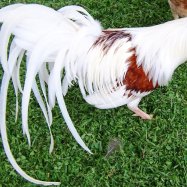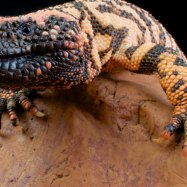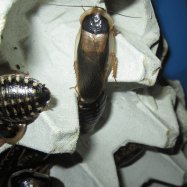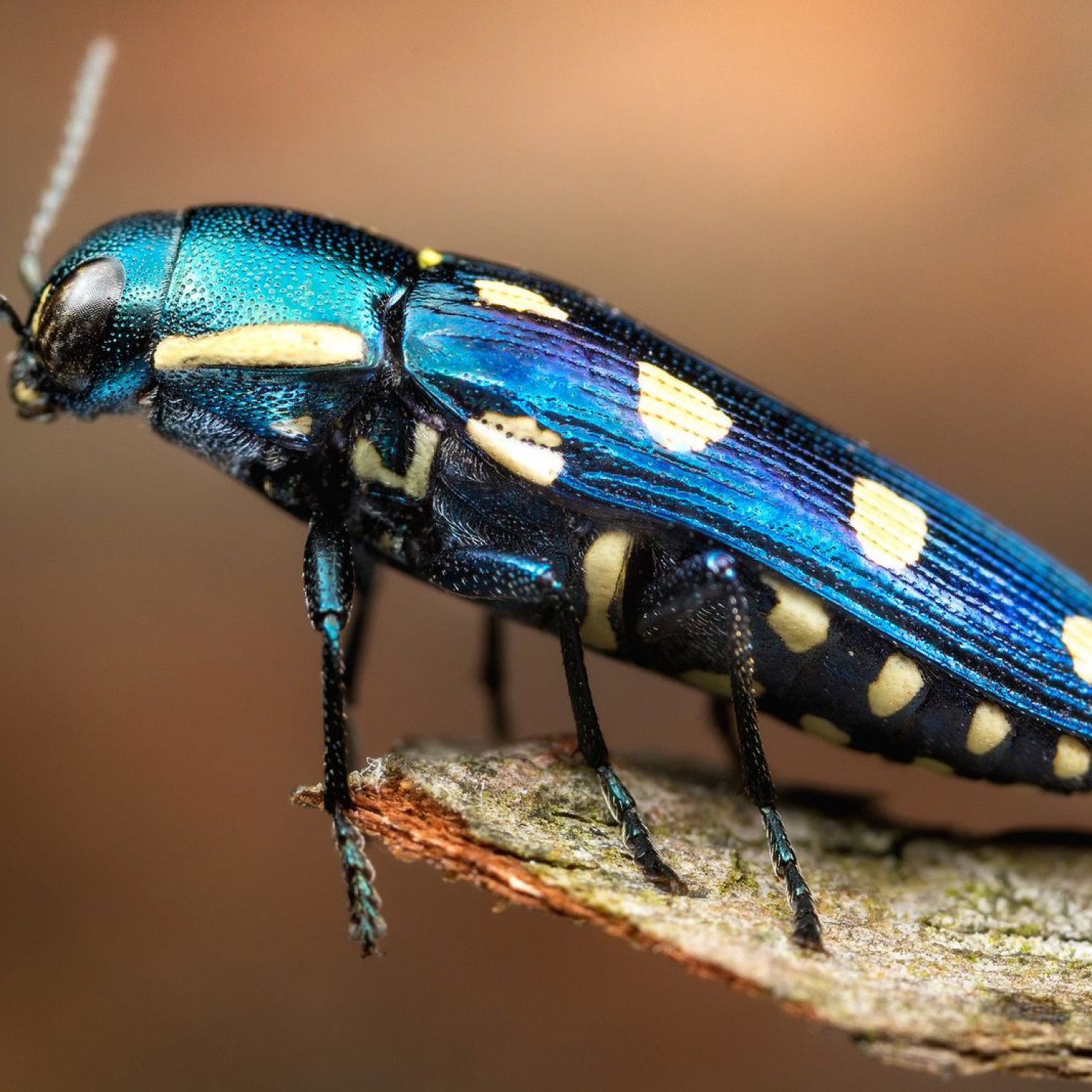
Jewel Beetle
Jewel beetles are fascinating creatures that are known for their shiny, iridescent wings. These beetles belong to the family Buprestidae and can be found worldwide. Their vibrant colors and intricate patterns make them a sight to behold in nature. Keep an eye out for these gorgeous insects on your next nature walk! #JewelBeetle #Buprestidae #Nature
Animal Details Summary:
Common Name:
Kingdom:
Habitat:
The Jewel Beetle: A Master of Disguise and a Gem of Nature's Design
Nature has a way of dazzling us with its countless creations, each unique and stunning in its own way. One such masterpiece of nature is the Jewel Beetle, a small but magnificent creature that captivates anyone who lays eyes on it. Its scientific name, Chrysina gloriosa, translates to "glorious golden one," a fitting name for such a remarkable animal.The Jewel Beetle is commonly known as the Buprestidae beetle, with over 15,000 known species found worldwide Jewel Beetle. These beetles can be found in almost every corner of the globe, from the rainforests of South America to the deserts of North Africa and even the mountains of Eurasia. They are known for their stunning metallic colors, delicate yet sturdy body structure, and remarkable abilities that make them one of nature's most unique species.
Kingdom: Animalia
Phylum: Arthropoda
Class: Insecta
Order: Coleoptera
Family: Buprestidae
It is safe to say that Jewel Beetles are true works of art crafted by nature herself. Their metallic colors are not only aesthetically pleasing but also serve a vital purpose in their survival – camouflage. The spectacular colors and intricate patterns on their exoskeletons are not just for show; they play a significant role in protecting these beetles from their predators. In the wild, blending in is the key to survival, and the Jewel Beetle has mastered the art of disguise.
The Jewel Beetle's habitat is as diverse as its appearance. They are found in forests, meadows, deserts, and even urban areas. In these habitats, they often reside in dead or decaying wood, where they lay their eggs Jackrabbit. Their feeding method is also quite fascinating; they feed on and destroy sapwood, leaving only the heartwood intact. This unique diet makes them essential in the decomposition process, contributing to the overall health of their ecosystem.
Geographically, the Jewel Beetle is distributed worldwide, with the highest concentration found in Central America, specifically in the tropical rainforests. These beetles are a vital part of their ecosystem, and they play a crucial role in maintaining the balance of their habitat.
Country of Origin: Central America
Geographical Distribution: Worldwide
One of the most intriguing aspects of the Jewel Beetle is its country of origin – Central America. This rich and diverse region is home to some of the most diverse and exotic species in the world. From the vibrant toucan to the majestic jaguar, the natural beauty of Central America is unmatched.
Location: Central America
Central America's tropical rainforests are home to an abundance of flora and fauna, making it a perfect habitat for the Jewel Beetle. These forests are known for their breathtaking views, diverse wildlife, and rich biodiversity. However, they are also facing immense threats due to deforestation and climate change. Scientists estimate that nearly half of the world's species live in these forests, and many of them are currently at risk of extinction.
The Jewel Beetle, along with many other species, is at risk of losing its natural habitat if deforestation continues at its current rate. These beetles depend on rich and diverse forests for their survival, and their disappearance could lead to an imbalance in their ecosystem.
The Jewel Beetle can be found in a dazzling array of colors, ranging from metallic greens, blues, purples, and even reds. They exhibit a phenomenon called iridescence, which is the ability to produce colors through structural coloration rather than chemical pigmentation. This means that their vibrant colors are created by light reflecting off their exoskeleton rather than being produced by pigments.
This natural phenomenon is what gives the Jewel Beetle its extraordinary and ever-changing colors, making them a sight to behold. Their exoskeleton is also extremely durable, making it difficult for predators to break through. In fact, the Maya civilization in Central America used the exoskeleton of these beetles to create artworks, jewelry, and even currency. This goes to show not only their unique colors but also their sturdy and resilient structure.
Animal Coloration: Iridescence
Aside from their stunning colors, the Jewel Beetle is also known for its unique body shape. These beetles have a characteristic dome shape, with a narrow and elongated head and a short thorax. Their body is typically 5-20 millimeters long, with some species reaching up to 50 millimeters. This compact yet robust body structure, coupled with their impressive colors, makes them a striking sight to see.
Body Shape: Dome-shaped, narrow and elongated head, short thorax
Length: 5-20 millimeters, with some species reaching up to 50 millimeters
With their magnificent colors and sturdy structure, it's no surprise that the Jewel Beetle has become a popular pet in recent years. However, it is essential to note that these creatures are delicate and require special care and attention. As with any exotic pet, it is crucial to research the specific needs of the animal to ensure it is given a healthy and comfortable life in captivity.
The Jewel Beetle may be small, but it is a vital part of its ecosystem. These beetles play a crucial role in the decomposition process, keeping their habitat clean and healthy. Their unique colors and body structure are not just for aesthetics but also serve a vital purpose in their survival. As inhabitants of one of the most biodiverse regions in the world, they contribute to the natural beauty of Central America.
In conclusion, the Jewel Beetle is a true gem of nature's design, captivating us with its stunning colors and remarkable abilities. Its story is a reminder of how intricately nature works, ensuring the survival of each species through its unique features. As humans, it is our responsibility to protect and preserve such remarkable creatures and their natural habitats. Let us appreciate the beauty of the Jewel Beetle and work towards creating a sustainable future where all species can thrive.

Jewel Beetle
Animal Details Jewel Beetle - Scientific Name:
- Category: Animals J
- Scientific Name:
- Common Name:
- Kingdom:
- Phylum:
- Class:
- Order:
- Family:
- Habitat:
- Feeding Method:
- Geographical Distribution:
- Country of Origin:
- Location:
- Animal Coloration:
- Body Shape:
- Length:
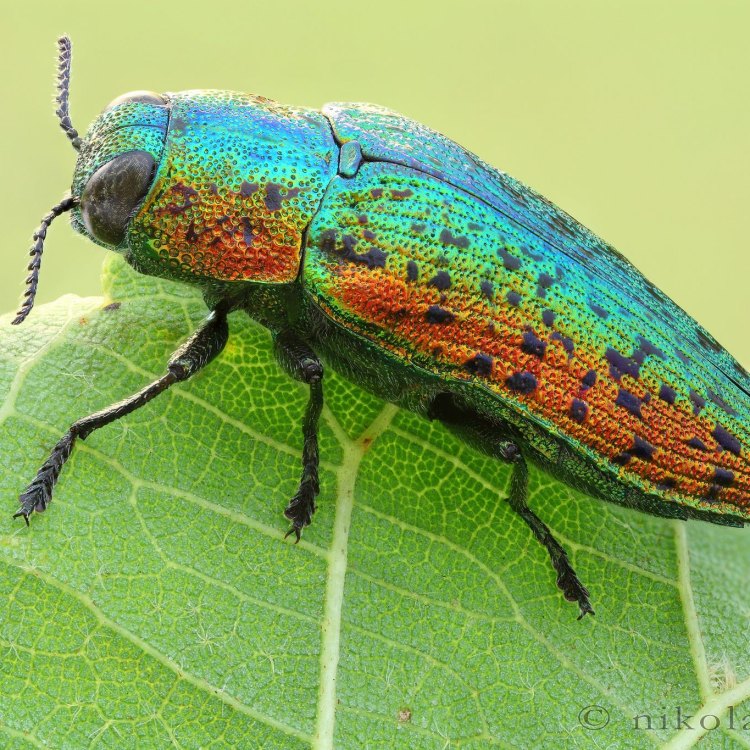
- Adult Size:
- Average Lifespan:
- Reproduction:
- Reproductive Behavior:
- Sound or Call:
- Migration Pattern:
- Social Groups:
- Behavior:
- Threats:
- Conservation Status:
- Impact on Ecosystem:
- Human Use:
- Distinctive Features:
- Interesting Facts:
- Predator:
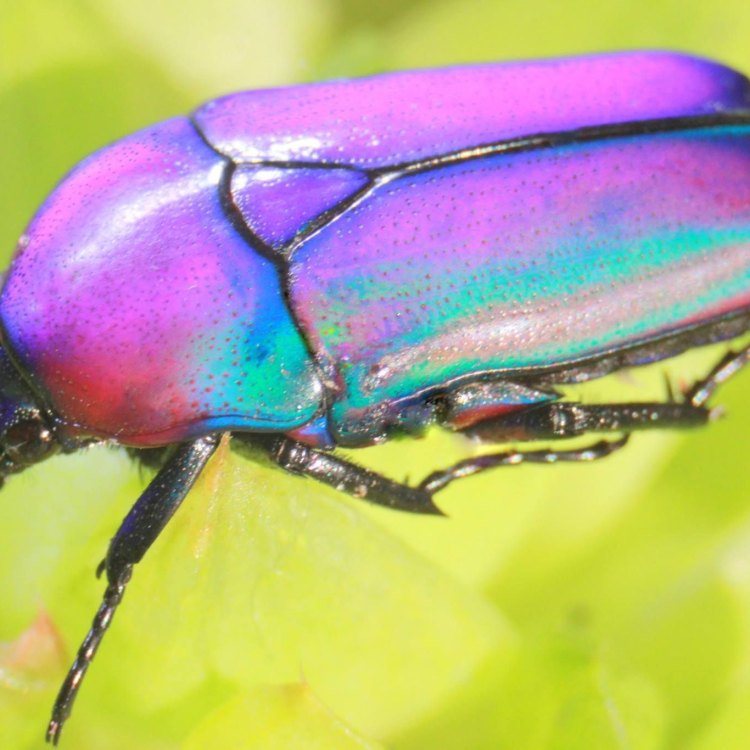
The Fascinating World of Jewel Beetles
The natural world is full of diverse and intriguing creatures that never cease to amaze us with their unique features and behaviors. One such creature is the jewel beetle, also known as the metallic wood-boring beetle, a fascinating insect that is found in various parts of the world. These beetles belong to the family Buprestidae and are known for their bright and colorful appearance, earning them the name "jewel" beetle.Adult Size:
The size of a jewel beetle varies depending on the species and region PeaceOfAnimals.Com. On average, these beetles range from 0.5 to 2 inches in length. They have an elongated and slightly flattened body, making them easy to navigate through narrow spaces.
Average Lifespan:
The average lifespan of a jewel beetle is around two years, but it can vary based on environmental factors and species. Some species have a shorter lifespan of just a few months, while others can live up to four years. This lifespan is relatively long compared to other insects, which generally have a shorter life span.
Reproduction:
Reproduction is an essential aspect of any species' survival, and jewel beetles are no exception. These beetles have a unique and fascinating reproductive process. They undergo complete metamorphosis, starting from egg to larva, pupa, and finally, the adult stage Jack Crevalle. The whole process takes around 1-3 years, depending on various factors.
Reproductive Behavior:
Jewel beetles exhibit interesting reproductive behavior that involves competition and resource sharing. The males of these species are territorial and engage in fierce battles with other males for mating rights with a female. The winner of the battle gets to mate with the female, and the loser has to look for other opportunities. Some species also use pheromones to attract potential mates.
Sound or Call:
While they don't produce any sound, some species of jewel beetles are known to have a distinctive clicking or hissing sound produced by their body parts. This sound is usually used as a defensive mechanism, and it can be heard when the beetles are agitated or disturbed.
Migration Pattern:
Jewel beetles play a vital role in their ecosystem and often stay in one locality. However, some species migrate hundreds of kilometers seasonally. They do this to find the right food sources and reproduce. Scientists believe that the migration pattern of these beetles may also be influenced by the fluctuation of temperature and humidity in their habitat.
Social Groups:
As adults, jewel beetles are generally solitary creatures and only interact during the breeding season. However, during the larval stage, they live and feed together in groups. These groups can consist of a few dozen to hundreds of larvae, depending on the species.
Behavior:
Jewel beetles are mostly active during the day and are often seen flying around or resting on flowers. They are attracted to colorful and fragrant flowers that provide them with food and shelter. However, they are also known to be a bit of a nuisance to humans, especially when they infest wooden structures and furniture.
Threats:
The biggest threat to jewel beetles is habitat loss due to deforestation and the expansion of urban areas. As their name suggests, these beetles bore through wood to survive, and with the destruction of their natural habitat, they are left with no place to call home. Pollution and climate change are also significant threats to their survival as they can disrupt the delicate balance of their ecosystem.
Conservation Status:
Unfortunately, the population of jewel beetles is declining rapidly, leading to their classification as either endangered or critically endangered on the IUCN Red List. Several species of jewel beetles are also listed as protected species and are included in various conservation programs worldwide.
Impact on Ecosystem:
Jewel beetles play a crucial role in maintaining the diversity and balance of their ecosystem. They help in pollination and are an essential food source for many animals, including birds, reptiles, and mammals. Their larvae also contribute to soil enrichment by breaking down decaying wood into nutrients for plants to absorb.
Human Use:
The eye-catching and often vibrant colors of jewel beetles have caught the attention of many. They have been used in various cultures throughout history for decorative purposes. In some countries, they are also used as ingredients in traditional medicine. However, the use of jewel beetles for commercial gain has had negative impacts on their population, leading to strict laws and regulations against trading these beetles.
Distinctive Features:
Jewel beetles have some distinct features that make them stand out from other beetles. One of the most apparent features is their bright and iridescent colors, which vary from species to species. Some species also have a metallic appearance, giving them a unique and shiny appearance. Their elongated and flattened body makes them look like gems, hence the name "jewel" beetle.
Interesting Facts:
- There are over 15,000 known species of jewel beetles worldwide, with new species being discovered every year.
- Jewel beetles are one of nature's best camouflagers, as their colors and patterns help them blend in with their surroundings.
- The wings of jewel beetles contain microscopic holes that bend and reflect light, giving them their shimmering appearance.
- These beetles have been known to bore through metals, leading to extensive damage to cars and aircraft.
- The larvae of jewel beetles can survive in extremely hot temperatures, up to 500 degrees Fahrenheit, by secreting a waxy substance to protect themselves.
Predator:
Like most insects, jewel beetles also have their share of predators in the wild. Birds, spiders, and parasitic wasps are some of the main predators of these beetles. However, their iridescent colors act as a defense mechanism, as it can confuse and interfere with the vision of their predators.
In conclusion, jewel beetles are undoubtedly one of the most fascinating insects on the planet. With their vibrant colors, unique behaviors, and importance in their ecosystem, these beetles hold a special place in the natural world. As their population continues to decline, it is our responsibility to protect and preserve these beautiful creatures for future generations to admire and appreciate.
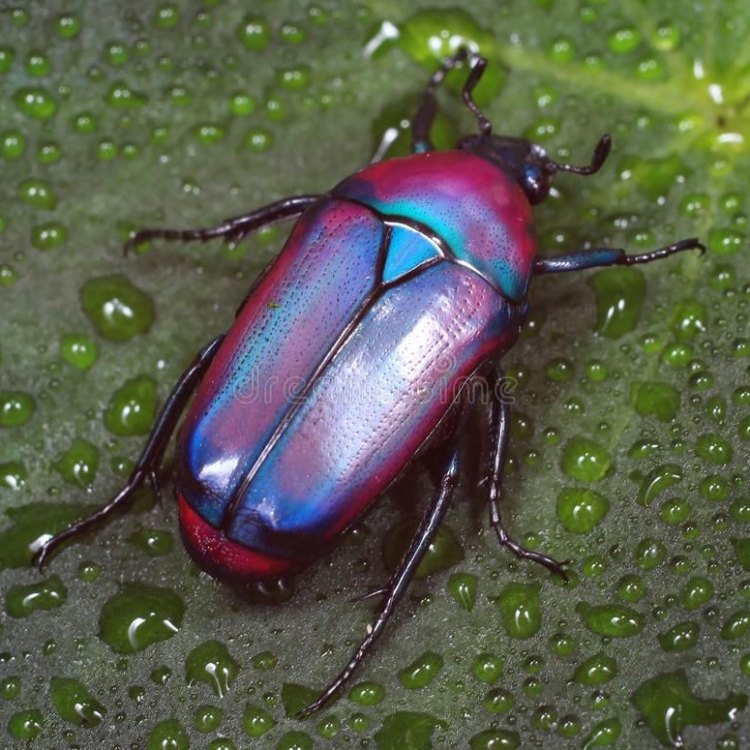
The Jewel Beetle: A Master of Disguise and a Gem of Nature's Design
Disclaimer: The content provided is for informational purposes only. We cannot guarantee the accuracy of the information on this page 100%. All information provided here may change without prior notice.


